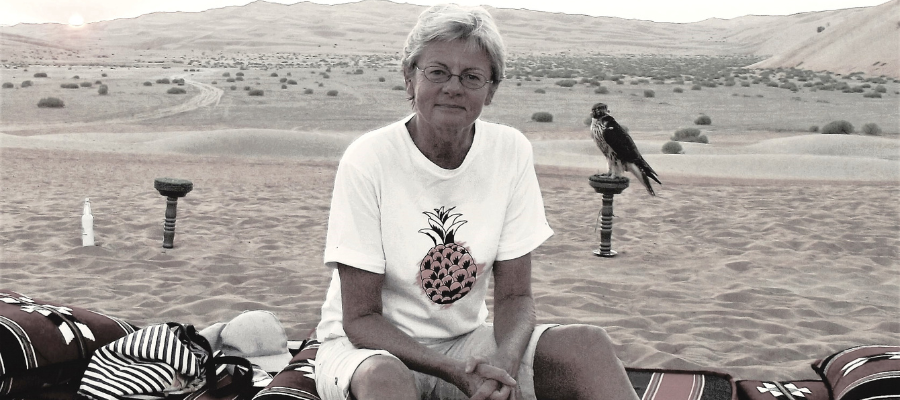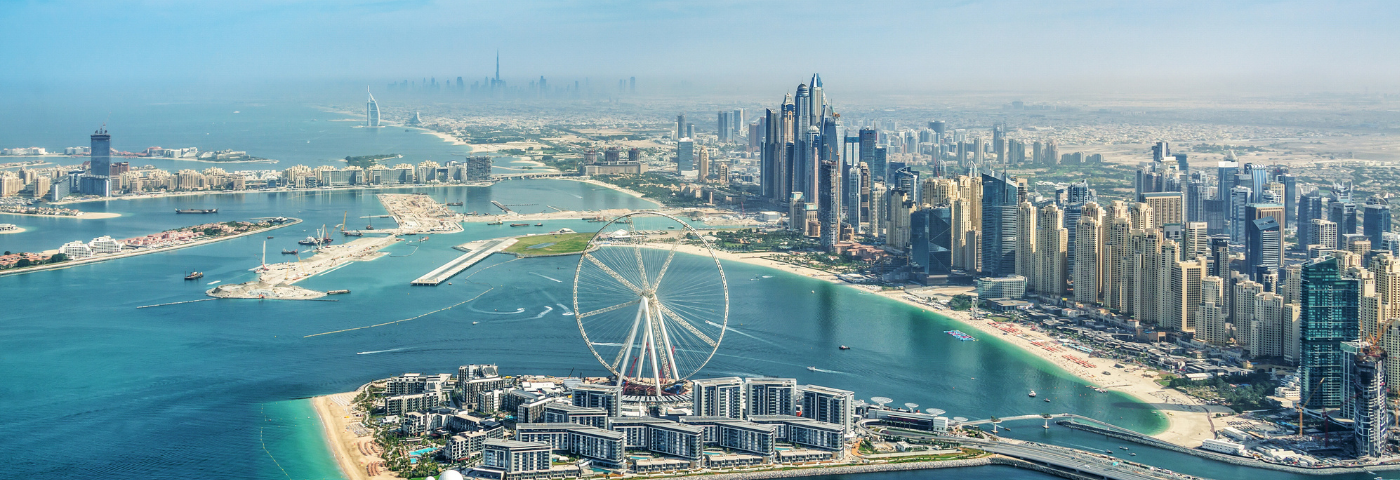Following a second showing in Bahrain in 1995, Arabian Travel Market moved back to Dubai the following year and set out to burnish its credentials as an essential element on the global travel calendar, writes Kathi Everden, editor of Middle East Travel
Occupying two halls at the Dubai World Trade Centre, the 1996 Arabian Travel Market saw the launch of a new Meridian Club and lounge for VIP visitors, as well as a technology clinic – and attracting 380 exhibiting companies targeting both the inbound and outbound sectors.
The World Travel Organisation had already designated the Middle East as the fastest growing region for arrival figures, up 11.8 per cent on the previous year – although Egypt took the majority of the inbound tourists, the GCC states were beginning to build a tourism infrastructure and promote to overseas markets.
The secret was out … the Gulf travel market was a magnet for development. Oman commissioned a masterplan for tourism, aiming for 1.2million visitors annually while the authorities in Fujairah set up the Fujairah Tourism Bureau – and to tap in to the outbound market, Malaysia set up a regional office, Australia and Singapore launched major promotions and the Maldives, Italy and Spain were among first-time exhibitors at ATM.
Dubai welcomed the first Dubai Air Show and Dubai Desert Classic golf tournament; announced a new conference and exhibition centre at DWTC and launched the first Dubai World Cup and Dubai Shopping Festival for 1996 – while opening its first dedicated promotions office in London.
Within a year, work had begun on the Chicago Beach complex (the Jumeirah Beach Hotel, Burj Al Arab and Wild Wadi) and plans were unveiled for the Palm Court deluxe extension at Jebel Ali Hotel, a second tower at the Forte Grand Jumeirah Beach and the first Radisson SAS resort in Dubai.
Join us at World Travel Market London
The market leading travel and tourism event brings the whole world together in London.
Join us from 5–7 November 2024 at ExCeL London.
Already, Dubai was featured in the brochures of 16 tour operators in Italy, 13 in France and 15 in Switzerland, as well as the major players in its big markets of Germany and the UK – and with 5.6million room nights, was aiming to double that figure by the year 2000.
It was a year when Emirates took delivery of its first Boeing777 and used that aircraft to launch services from Dubai to Melbourne – offering state-of-the-art technology for inflight entertainment that encompassed 15 TV channels, 22 audio channels and external TV cameras, giving all passengers access to seat-back screens for the first time.
Technology was at the forefront of everyone’s mind as the Internet began its global invasion – while only three per cent of bookings in the region were made using GDS (compared with 50 per cent in the UK), and Emirates launched Mercator to distribute technology solutions for reservations in the GCC.
Every major hotel chain was looking at the introduction of toll-free reservations and regional sales offices, while national tourist boards were also researching potential for a local presence – with Germany and the UK among the first players in the market.

Blue sky thinking
On the ground, the scene was set for a major explosion in the name game – with only 1,185 hotel rooms on the beach, the Dubai Tourism & Commerce Promotion Board anticipated the number rising to 2,155 by 1999 and 2,915 by 2000.
While the focus was on Dubai’s ground-breaking projects such as the Jumeirah Beach Hotel, it was not the only player in the game – in Abu Dhabi, as well as a second Hilton, work was underway on a Holiday Inn Crowne Plaza, Radisson SAS, a conference and exhibition centre and a new golf course, while Bahrain and Qatar were also planning championship golf courses.
Expansion was announced at Doha Airport; Gulf Air introduced its Falcon ffp, the first in the region, while Emirates launched in to Africa for the first time with services to Johannesburg via the Comoros Islands (an Indian Ocean destination yet to make its mark).
A second airport terminal was under construction in Dubai and a new concourse was planned and even Ajman had sealed a deal for an upmarket beachfront resort – later announcing Kempinski as the operator.
All of which meant there was plenty to talk about at the 1997 ATM, which registered 20 per cent growth with a third hall, 450 exhibitors from 47 countries, and a 20 per cent rise visitors from outside of the GCC. As well as an Internet café, a hosted buyer programme was piloted and the Arabian Travel Market conference was held in Bahrain.
It was the year that the Dubai promotion board released guidelines for the travel sector to protect the environment … and itself morphed in to a new government entity as the Dubai Department of Tourism & Commerce Marketing in charge of licensing and planning as well as promotion.

A 50 per cent increase in hotel numbers was planned; a new focus on the cruise sector, a hotel strip along the World Trade Centre Road and a new logo aiming to depict the promise of ‘an exotic experience in a modern resort setting’.
Elsewhere, Kuwait launched the Kuwait Tourism Services Company offering net packages commissionable to the travel trade, while the Sharjah Commerce & Tourism Development Authority was another new entity, and the Jordan Tourism Board also joined the fray.
Global names queued to get in on the action with Ritz Carlton announcing a Dubai resort; Le Meridien doubling up on the beach with a Mina Seyahi property; Hyatt and Radisson opening in Muscat and a new Hilton on the planning board for Salalah.
All of which served to make the ATM in 1998 bigger and better than ever, moving in to a fourth hall, introducing an appointment system and a pre-event GCC roadshow and attracting 530 exhibitors from 41 countries, with 7,500 registered visitors – although the ATM Conference in Doha was the last stand-alone talking shop.
That show signalled the coming of age of the region as a serious player in the global tourism market – and the new and novel continued to woo the travel trade.
Dubai Summer Surprise festival was introduced to boost low occupancies in the low season; Planet Hollywood and the Hard Rock Café brought in a touch of Hollywood glamour; construction started on the Dubai Cruise Terminal at Port Rashid and on the Dubai Marina, with plans for 20 hotels there. The Royal Mirage Beach Hotel presaged a touch of Arabic fantasy, while in Ras Al Khaimah, the Al Hamra Forte Hotel roughly duplicated that concept at a much lower rate.
Emirates Towers, Four Seasons, numerous Rotana hotels, and several Hyatts aimed to boost Dubai’s room count, and Four Seasons, InterContinental and Ritz Carlton were mooted for Doha. And then there was the Palm project … designer tourism for the 21st century.
The rapid development of Dubai and the region’s upmarket tourism offering was now well underway…and yet, this was only the beginning. Today, Dubai stands as a global tourism hotspot, and ATM’s 30th edition is expected to be, more than ever, the highlight of the travel and tourism calendar with over 34,000 travel and tourism professionals and over 2,000 exhibitors from more than 150 countries.


